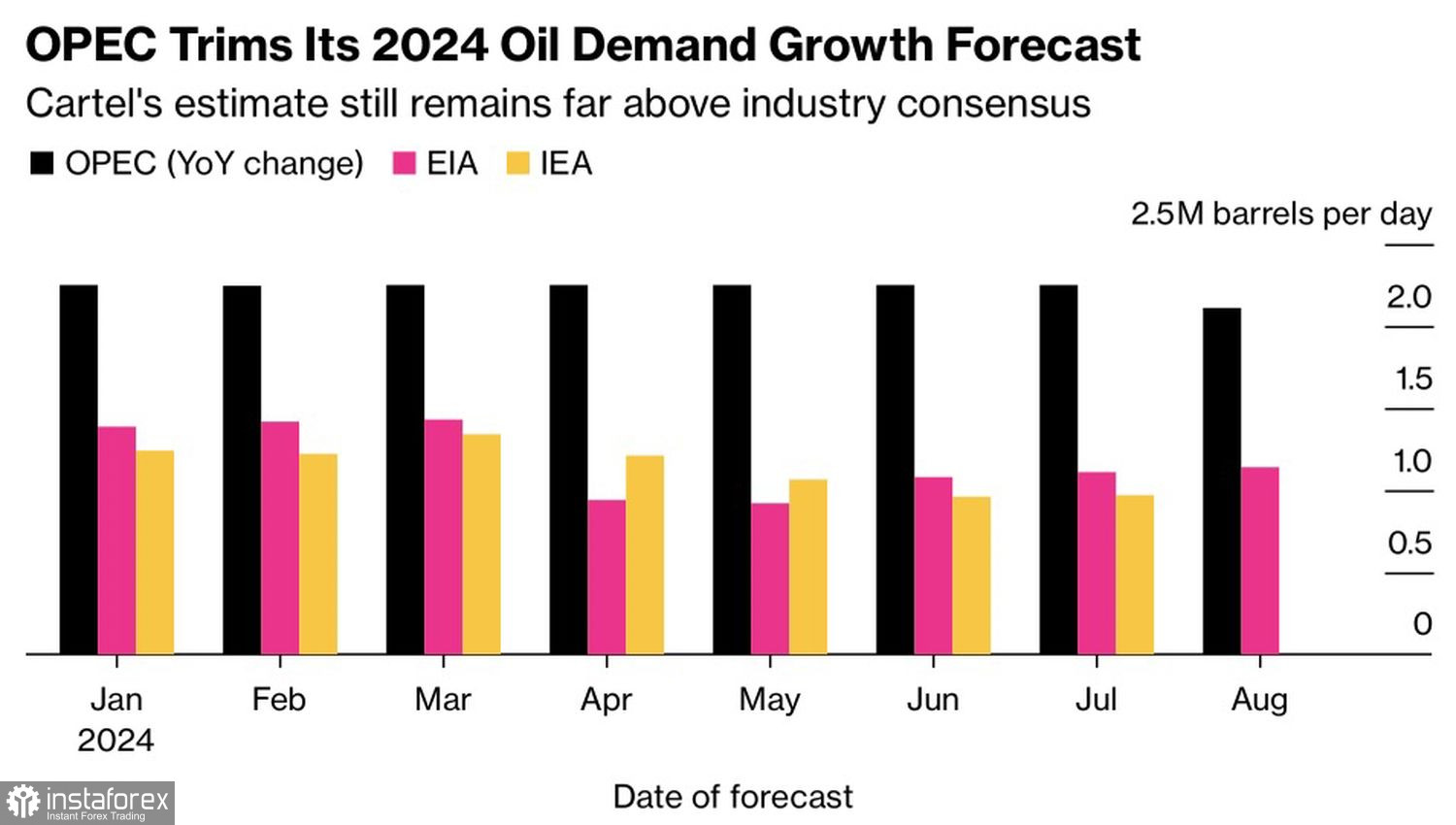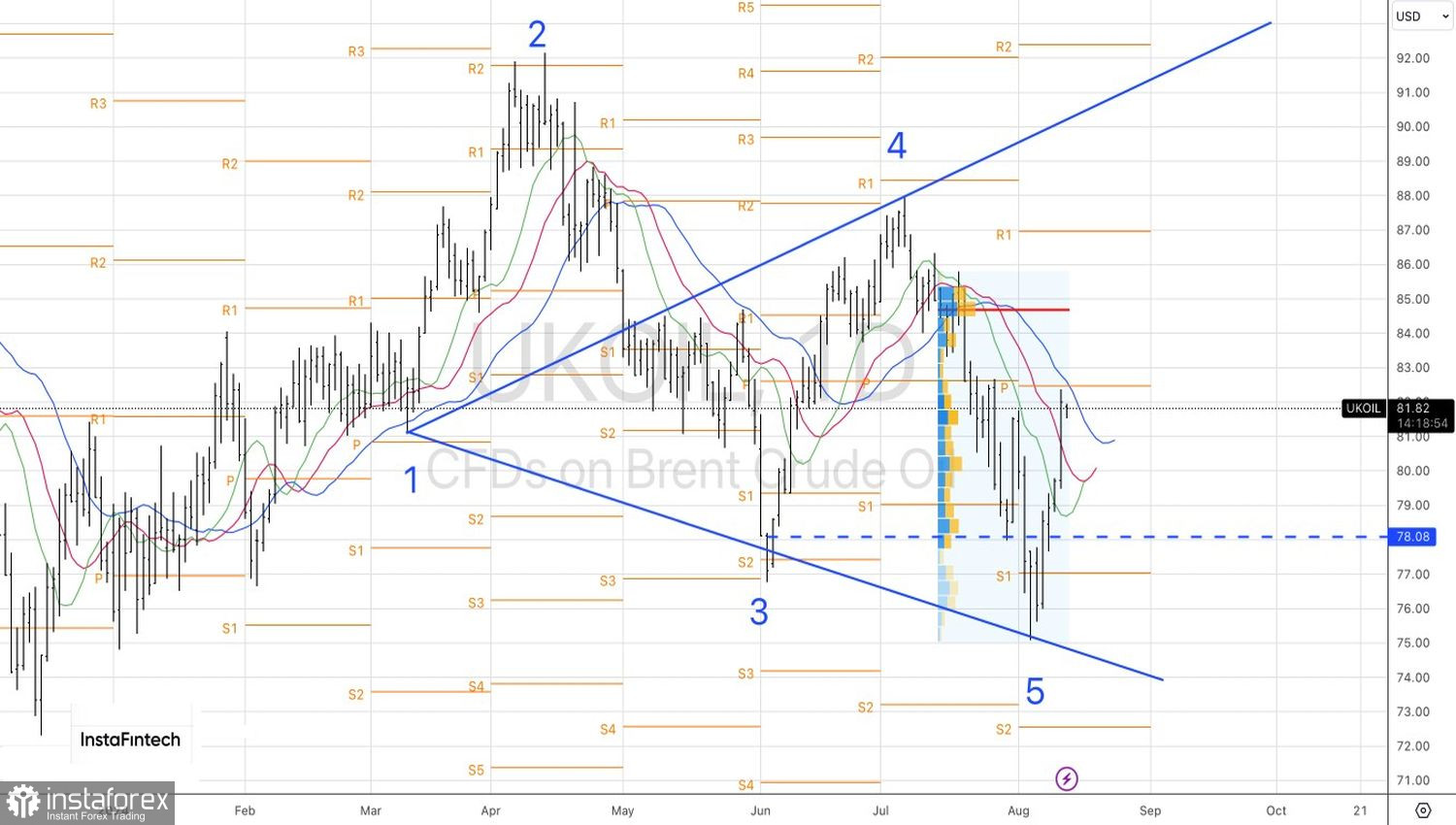When everyone is selling, it's a great opportunity to buy. Over the past five weeks, hedge funds and asset managers have liquidated six major oil and oil product futures contracts totaling 372 million barrels. Brent was being liquidated at the fastest pace since 2011 due to fears of a U.S. recession and financial market turmoil. But as the storm subsided and fears dissipated, investors turned their attention back to geopolitics.
Federal Reserve officials do not believe that the U.S. is facing a downturn and are debating whether it's even necessary to lower the federal funds rate. The Bank of Japan does not intend to tighten monetary policy during periods of increased financial market turbulence, and the sharp decline in jobless claims is a sign that the U.S. labor market is in better shape than expected. As a result, fears of a sharp drop in global demand amid a slowdown in the global economy have eased, and Brent has started moving north.
Investors were not deterred by OPEC+'s decision to lower global demand forecasts by 140,000 barrels per day (bpd) in 2024 due to a slowdown in China's demand for crude oil. The alliance has long been considered far more optimistic than the U.S. Energy Information Administration (EIA) and the International Energy Agency (IEA), and the cut was rather insignificant.
Oil Demand Forecasts

The specifics reveal the true impact. Despite lowering its forecast for China by 80,000 bpd, the projection suggests that China's appetite for oil should increase in the near future after an underwhelming first few months of the year. In July, oil imports dropped from 11.3 million bpd to 9.97 million. Overall, from January to July, the figure was weaker than expected.
In addition to easing concerns about a U.S. recession and global oil demand, the rise in geopolitical tensions in the Middle East became a strong argument in favor of buying Brent. Israel's invasion of Gaza continues, and Iran has vowed to retaliate for the killing of Hamas and Hezbollah leaders. The armed conflict threatens an embargo on Iranian oil exports of about 1.5 million bpd. Moreover, as retaliation, Jerusalem might target Tehran's oil infrastructure. In a worst-case scenario, Iraq could also be affected.

Thus, the reduction of risks related to a significant slowdown in global demand and fears of worsening supply issues from the Middle East have become catalysts for the rally in North Sea crude. The only factor that has slowed it down is the anticipation of key U.S. inflation statistics for July. These data will influence the Federal Reserve's monetary policy and provide clues about the state of the U.S. economy.
Technically, on the daily Brent chart, the buy signal triggered by the breakout of the important $78.1 per barrel level, in accordance with the Wolfe Wave pattern, has been precisely followed. It makes sense to hold long positions and increase them on pullbacks or during a test of the pivot level at $82.5.
 English
English 
 Русский
Русский Bahasa Indonesia
Bahasa Indonesia Bahasa Malay
Bahasa Malay ไทย
ไทย Español
Español Deutsch
Deutsch Български
Български Français
Français Tiếng Việt
Tiếng Việt 中文
中文 বাংলা
বাংলা हिन्दी
हिन्दी Čeština
Čeština Українська
Українська Română
Română

